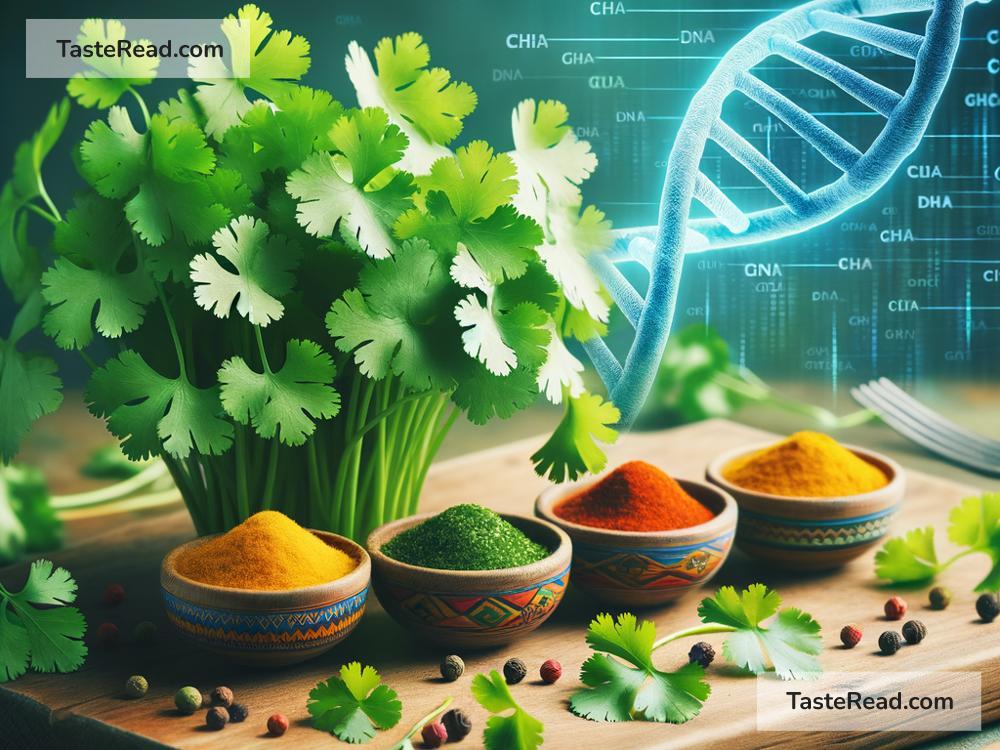Why Do Some People Think Cilantro Tastes Like Soap? The Science Explained
Cilantro is one of those foods that sparks strong feelings—it’s like the Marmite of the herb world. While many people love its fresh, citrusy flavor, others can barely stomach it because to them, it tastes like soap. But why would cilantro taste like soap to anyone? The answer lies not in the herb itself, but in the science of genetics and how your brain perceives flavors.
What Is Cilantro, and Why Is It So Polarizing?
Cilantro, also called coriander in some parts of the world, is an herb commonly used in cuisines like Mexican, Indian, and Thai. Its leaves and stems are packed with flavor, and they’re often sprinkled on dishes like tacos, curries, soups, and salads.
For people who enjoy cilantro, its taste is bright, lemony, and fresh—a flavor that can enhance many dishes. But for people on the other side of the culinary divide, cilantro tastes unmistakably like soap. This aversion can be so strong that it turns them off entirely from dishes that include even a hint of the herb.
The “Soap Taste” Explained: It’s All About Your Genes
So, what causes the soapy taste? The key lies in a genetic variation in your DNA, specifically in a gene called OR6A2. This gene is responsible for encoding smell receptors in your nose, which detect different chemicals in the things you eat. For people who think cilantro tastes soapy, their OR6A2 gene is extra sensitive to a specific chemical compound found in cilantro: aldehydes.
Aldehydes are organic compounds that cilantro naturally contains. Interestingly, some aldehydes in cilantro are chemically similar to those found in soaps and detergents. If your OR6A2 receptors are highly responsive to these aldehydes, your brain might make an unfortunate connection between cilantro and soap—it’s like doing flavor math and ending up with a bad answer.
On the flip side, people who don’t taste soap in cilantro simply have a different version of the OR6A2 gene, which doesn’t react as strongly to those aldehyde compounds. For them, cilantro’s citrusy or herbal notes dominate, making the herb taste delicious rather than unpleasant.
What Studies Say About Cilantro and Genetics
Scientists have been curious about this phenomenon for years, and researchers have identified clear genetic links to cilantro aversion. A study published in 2012, conducted by 23andMe (a personal genetics company), analyzed the DNA of tens of thousands of participants. The study found that people who dislike cilantro often share a variant in their OR6A2 gene.
Interestingly, cilantro aversion seems to vary by culture and geography. People of European descent are more likely to dislike cilantro, while individuals from East Asian or Latin American backgrounds are less likely to report a soapy taste. This could be partly cultural—cuisines from China, Mexico, and India frequently use cilantro, exposing those populations to its flavor from a young age. But the genetic component likely plays a role too.
Can You “Train” Yourself to Like Cilantro?
If you’re one of the people who can’t stand cilantro, you’re probably wondering: Is there any hope of changing my perception? While genetics do play a big role, there’s evidence that exposure and familiarity can sometimes help.
For example, some people who hated cilantro at first found their taste for it changed over time. This might happen because your brain can gradually learn to associate cilantro’s flavor with positive experiences. Repeated exposure to a taste can sometimes dull your sensitivity to the soapy aldehyde perception, especially if the cilantro is paired with foods you enjoy.
If you want to give cilantro another shot, here are a few tips:
1. Start small: Use tiny amounts of cilantro chopped into a dish where it plays a subtle supporting role, rather than a starring role (like guacamole or salsa).
2. Crush the leaves: Crushing or bruising cilantro can help neutralize some of the aldehydes, muting the soapy taste.
3. Try cooking it: Cooking cilantro changes its chemical makeup, softening its flavor. Some cilantro-haters find it more palatable when used in cooked dishes rather than raw.
Of course, if cilantro still tastes unbearable, it’s okay to avoid it altogether! There are plenty of other herbs that can take its place, like parsley, basil, or mint, depending on the recipe.
The Bigger Picture: Why We Taste Things Differently
The cilantro debate is part of a larger mystery about why food tastes different to different people. Our sense of taste is influenced by a combination of genetics, smell receptors, cultural upbringing, and personal experiences. For example, some people are super-sensitive to bitter flavors, while others don’t mind them.
In the case of cilantro, we now know that genetics plays the starring role, but it’s not the only factor. Your brain, your food memories, and even the first time you ever tasted cilantro all contribute to how you feel about the herb. So the next time someone says “cilantro tastes like soap,” you can politely tell them it’s not just in their head—it’s in their DNA!
Final Thoughts
Whether you love cilantro or can’t stand it, understanding the science behind this divisive herb is fascinating. It’s a reminder that our unique genetic code influences not only how we look and how we feel, but also how we taste and experience food. So the next time you sprinkle cilantro on your tacos, you’ll know why your taste experience might be totally different from someone else’s—and that’s completely okay. Food diversity is what makes eating so exciting!
What’s your take—do you lean Team Cilantro or Team Soap? Let us know in the comments below!


